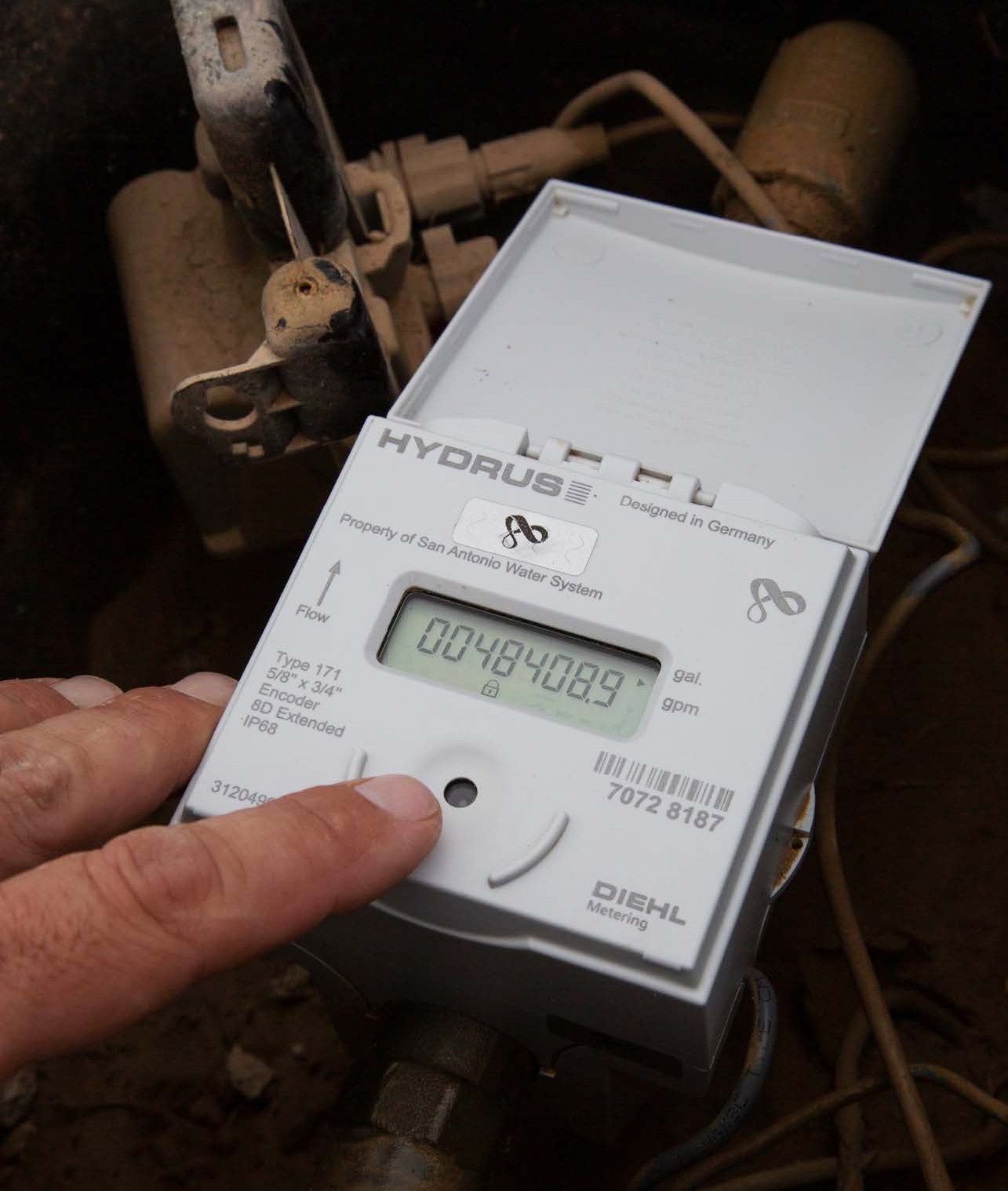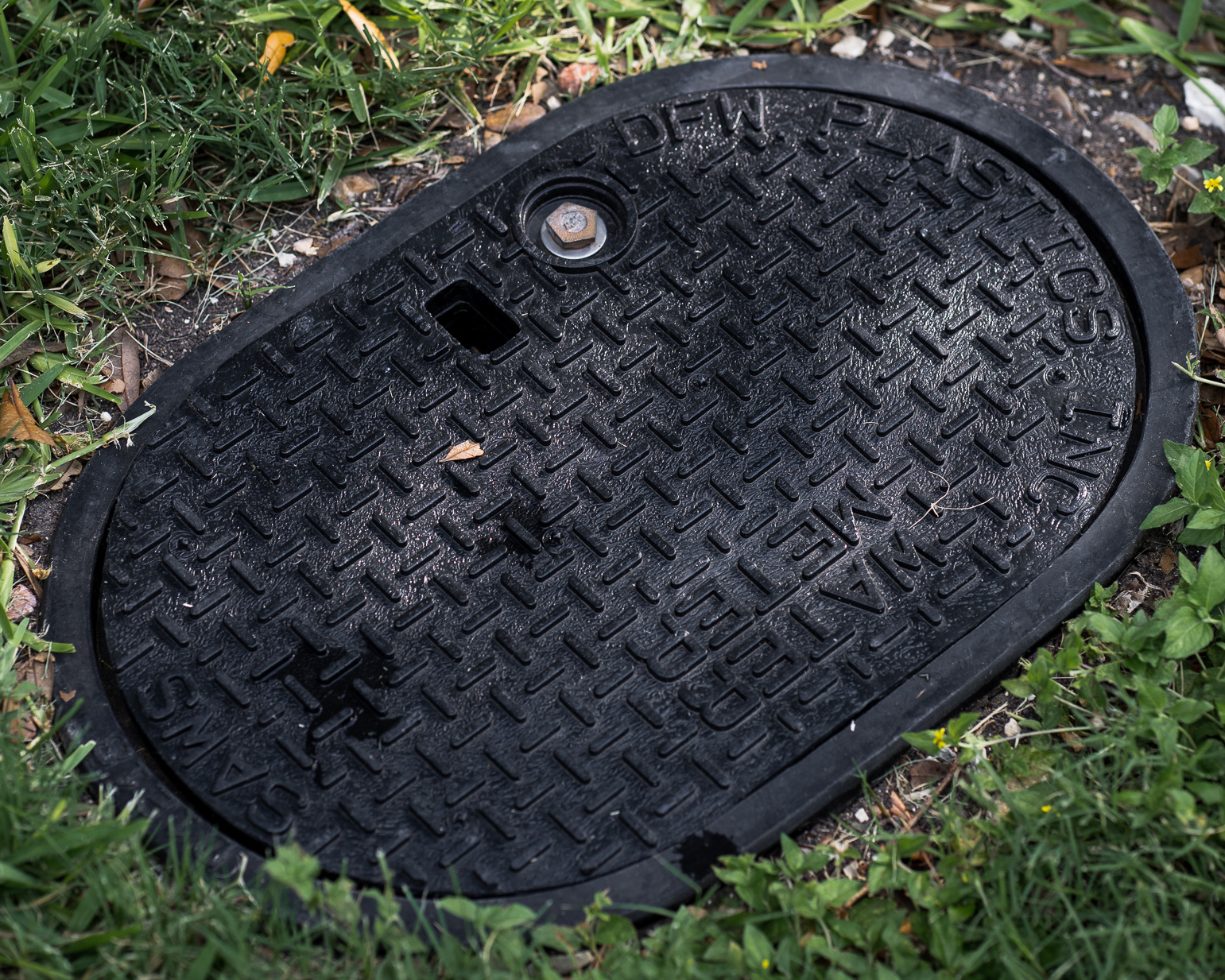Reading Electronic Water Meter to Help Identify Leaks
READING THE WATER METER
Learning how to read the water meter can help you detect a leak instantly.
|

When water is not being used the Flow Rate screen should display all zeros. This screen which comes after the Current Total Volume screen will display gallons per minute, or gpm and will fluctuate if there is water use. Follow the steps below to use the meter to help you find leaks.
STEP 1
Turn off all inside and outside water faucets.
STEP 2
Check the meter. Toggle to the Flow Rate screen by tapping the optical sensing button and look at the numbers that appear. If you see any number other than zero then leaks exist on your property and need to be located. To get a better idea of how much water is leaking record the reading on the Current Total Volume Screen, leave all the water off for the next hour, and come back to see if the reading has changed. If there is a higher reading, there is a leak.
STEP 3
Locate the source of the leaks.
THE WATER METER
The water meter tells you how much water you are using each month. You can monitor the meter yourself to check for leaks in your water system.
LOCATING AND READING THE WATER METER

Water meters are located underground beneath a round or oval lid. The meter may be found in a variety of locations. The most common place is between the hose bib (faucet) at the front of your house in a direct line to the street. If the house is on a corner lot, the meter could be on the side of the house. Alley locations are common in certain parts of the city as well.
Remember, this is South Texas so watch for spiders and ants when opening the lid.
The electronic water meter has a digital display and an optical sensing button. There are 7 screens that you can toggle through in order of appearance on the meter display. These are: Errors and Alerts, Current Total Volume, Flow Rate, Current Water Temperature, Software Version, High Resolution Reading, and Display Test (see details for each screen at saws.org/emeter). To navigate just tap the meter’s optical sensing “button” with your fingertip to advance to the next screen.
To see your current water use in gallons navigate to the Current Total Volume screen which will show total water use since the meter was installed. Read the display from left to right using standard place values. You can subtract the previous month’s reading from the current reading to calculate total water use for your bill each month. Customers are billed per thousand gallons of water used. Additionally, more detailed information regarding your water use, past and current, can be accessed via your account online at saws.org/myaccount.
|
THE LEAK’S SOURCE
Add food coloring or a dye tablet to water in the tank, but don’t flush. If coloring appears in the bowl, your toilet is leaking.
Learn to repair your own faucets, so that drips can be repaired promptly. It’s easy, costs very little and can help you save money in plumbing and your water bill.
Walk around your property to check for the following: green patchy areas, moist areas or saturated areas on the ground. It is essential to check sprinkler valves, heads and the main line.
Check the following valves for leaks: cut-off valves, sprinkler valves and valves under sinks.
Look for standing water near water heater.
Make sure your water softener works properly. Refer to the owner’s manual or contact someone to verify if softener needs to be serviced.
Check these areas: ceiling, between walls and around the slab. If your walls, floor or ceiling have stains, mildew or moisture, you may have a water leak.
Check to see if icemaker is dripping or look for water stains on the floor. Make sure icemaker is connected properly.
WHAT TO DO IF YOU FIND A LEAK
SAWS is responsible for maintaining the water line from the main to the water meter. You are responsible for repairs to any part of the water system from the meter toward your home. If you find a leak, please have it repaired to minimize water loss and any impact to your bill. Then, if you submit your repair receipts, we can review your account for a possible adjustment.
Request a Leak Repair Adjustment

